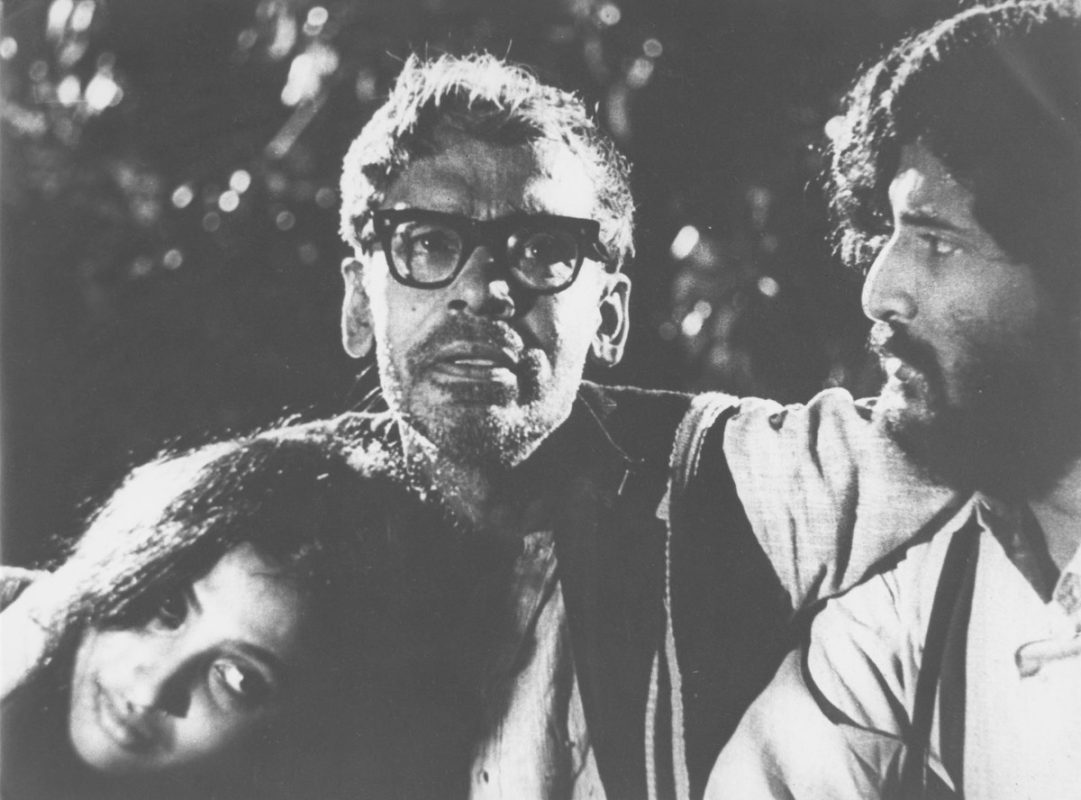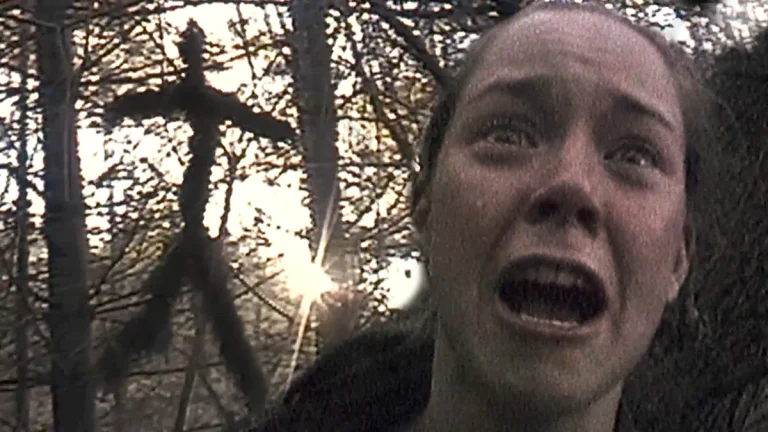Ritwik Ghatak’s film “Jukti Takko Aar Gappo” (Reason, Debate and a Story, 1974) stands as a compelling cinematic meditation on the socio-political decay and psychic fragmentation of post-Partition Bengal, which has often been considered as his semi-autobiographical farewell. The film defies narrative conventions through its episodic structure, symbolic characters, and abstract mise-en-scène, and a Marxist-psychoanalytic framework aptly proves fertile for interpreting the film’s dense symbolism and political undertones.
The barren landscapes, disjointed dialogues, and surreal characters evoke the aesthetics of Samuel Beckett’s “Waiting for Godot,” situating the work within an absurdist tradition underscoring the futility, repetition, and alienation of life in a fractured postcolonial state—thus amalgamating the magic of the bengali director’s masterpiece that blends postcolonial trauma in the potion of post-modern world’s absurdism.
The film opens with the image of a fearful old man and three mysterious figures dressed entirely in black, dancing to a jarring fusion of semi-classical and tribal music—— introducing an atmosphere of disorientation and estrangement, signalling Ghatak’s intention to operate beyond the logic of realism.
The three dancers bear a distant resemblance to the witches in Shakespeare’s “Macbeth,” harbingers of chaos and doom, although Ghatak never acknowledged a direct reference. These spectral figures function as metaphors of disorder, operating like the return of the repressed in Freudian psychoanalysis—entities that erupt from the unconscious to disturb the symbolic order of the film, and this trio calls for an ominous narrative that lies in mythology, in reason, as well as the psychic.
The protagonist Nilkantha Bagchi, played by Ghatak himself, is introduced as a failed intellectual and a self-destructive alcoholic, abandoned by his wife and son. He emerges as a character, layered and allegorical, representing both the individual fractured by personal failure and the archetype of the alienated Marxist intellectual, who is stranded in stark pessimistic truth, and strayed as disillusioned failure by the betrayal of the revolutionary promise that was once made. From the outset, he is depicted as emotionally and ideologically exhausted, yet still capable of critical insight.
The camera frequently frames him from a low angle, emphasizing his looming presence and hinting at the authority he once held within the intelligentsia, yet it is true as well that he still holds that place, but in the abstract verity of this world, where his decoding of the parable of this world is denied. However, his venture continues to unravel the truth- the truth about displacement from the truth of a nation that once existed without any chains and boundaries. His intoxicated stupor underscores the state of paralysis that Bengal—and perhaps India itself—had entered in the wake of Partition and political disillusionment.
Nilkantha’s wanderings with his nephew and Bongobala, a refugee from East Bengal, mirror the structure of an absurdist quest—-traversing across an abstract urban landscape, reminiscent of the purgatorial space in “Waiting for Godot,” and they encounter figures who embody various postcolonial anxieties: the deranged schoolmaster or the crushed intellectual down the lower strata, the silent artists or those silenced by the false hegemony, the opportunistic bourgeoisie who climbs the ladder while uplifting this power play, and the militant Naxalites or the ones who turn towards violence in hope of tumbling down everything to start anew.
From a Marxist standpoint, the film is a potent critique of class oppression and ideological stagnation. Ghatak portrays the bourgeois class as complicit in the suppression of truth, embodied in characters like Nilkantha’s former friend (played by Utpal Dutt), who has abandoned his idealism in favor of comfort and conformity, while the revolutionary Naxalites are depicted as energetic but misguided, engaging in violence without philosophical grounding.
Nilkantha’s final monologue to them—delivered in a drunken yet lucid tone—offers a biting critique of blind militancy and dogmatic communism, lamenting how both bourgeois apathy and radical extremism have betrayed the aspirations of the people. The film poetically attempts to embody what Gramsci described as the “crisis of authority,” in which neither the ruling class nor the opposition commands moral legitimacy.

Simultaneously, Ghatak’s psychoanalytic sensibility reveals itself through recurring motifs of trauma, loss, and maternal displacement. Bongobala, the refugee woman, is not merely a character as she symbolizes Bongo Mata—the motherland—battered and violated by the twin forces of Partition and communal violence.
In one of the most striking scenes, she dons the mask of Chou Nach, a traditional folk form from Purulia, and performs the role of Devi Durga, and this moment is ritualistically powerful, holding Freudian symbolism, merging the sacred with the grotesque. According to Julia Kristeva, the mother is both nurturing and abject, capable of being a source of love and of existential horror.
Bongobala, as Bongo Mata, scolds, forgives, and mourns—an image of a motherland that nurtures even as she is broken. Moreover, the figure of the mad schoolmaster, whose speech degenerates into incoherent fragments, functions as an embodiment of Lacanian psychosis—his fractured language signifies the collapse of the Symbolic or the domain of structured discourse and the incursion of the Real, the traumatic core that language fails to contain. His presence serves as a reminder that the psychological effects of Partition and dislocation are not merely historical facts, but unhealed psychic wounds that defy rational articulation.
Ghatak’s use of music and performance aligns with Bertolt Brecht’s idea of “epic theatre.” Folk songs, Baul traditions, and masked dances interrupt the diegesis, encouraging critical distance rather than emotional identification—these Brechtian techniques underscore the artificiality of the cinematic world, compelling viewers to reflect on the socio-political messages embedded within rather than lose themselves in narrative immersion.
The culmination of Nilkantha’s journey is marked by his tragic death, immediately after addressing the Naxalite youths. His demise is not merely personal but symbolic- it represents the silencing of critical consciousness, the death of reason, and the burial of hope. The intellectual who once mediated between the masses and the ideologies that claimed to liberate them is now extinguished.
The film ends as it begins—with the image of the old man’s tense, fearful face and the ghostly black dancers, and this circular structure refuses closure, reaffirming the condition of absurd repetition, where history haunts the present without redemption. “Jukti, Takko Aar Gappo” is a cinematic text of profound complexity, where Marxist critique and psychoanalytic depth meet within an absurdist framework, speaking to the political failure of postcolonial India, the betrayal of revolutionary ideals, and the psychological cost of dislocation and ideological exhaustion.
Through symbolic abstraction, ruptured narrative, and emotionally charged performances, Ghatak’s film not only laments the past but questions the possibility of future redemption in a world where truth is both desperately needed and perpetually suppressed.



![In The Heights [2021] ‘Tribeca’ Review: A Delightful Mania of Music and Dance](https://79468c92.delivery.rocketcdn.me/wp-content/uploads/2021/06/In-The-Heights-768x456.jpg)
![For Your Consideration: Bringing out the Dead [1999]](https://79468c92.delivery.rocketcdn.me/wp-content/uploads/2017/04/cage_stern_driving-768x340.jpg)

